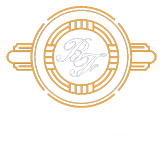
The main objective when creating your resume is convincing your potential employer to arrange a face to face interview with one glance at your CV. Your resume is designed to represent the most accurate information regarding your skill set and employment background, without creating an autobiography of your entire life.
To help you get shortlisted we have created a step by step guide for building an impressive resume that will ensure you stand out from the rest. Click on the below link to view our sample resume.
We advise structuring your CV in the below order:
1. Contact details
2. Education
3. Employment history
4. Achievements
5. Interests
6. References
Step 1: Contact details
Include your full name, address, phone number and email address (We advise leaving out your DOB).
Step 2: Education
Always list your most recent qualification first.
Example
2006 – 2007
Masters of Tax
(University)
2003 – 2005
Bachelor of Commerce – Major in Accounting
(University)
(Awards)
2002
Higher School Certificate
(School)
(UAI/TER)
Step 3: Employment History
Outline your career history starting with your most recent role, you want to work backwards from your most recent role and don’t leave any gaps – If you took a year off to go travelling or changed industries, make sure you include it. With your employment history you want to be listing your dates of employment (both months and years), name of employer, job title and key responsibilities. It is important to be as detailed as possible and include everything that is relevant for the specific role you are applying for.
Step 4: Achievements
Achievements are the things you did in your job which made a positive impact and contribution to your employers business. Your achievements are not just an exaggerated way of describing your skills or experience; they are tangible proof of your past performance.
A great way to get a very clear and precise message across of your achievements is when you quantify then using numbers or percentages (only if relevant to you).
For example: Increased quarterly revenue by $30,000 or increased quarterly revenue by 17%.
Although sales are undoubtedly very important, a common mistake that people make is forgetting all of the other ways to making a positive difference to their organisation.
For example:
• Trained 5+ staff members in the new software
• Organised a fundraising event that brought in over $5,000 for disadvantaged children
• Negotiated a cost saving plan with a key client and reduced their fees by 10%
Step 5: Interests
The key idea of including your interests is so that the reader is able to reflect on your personality and gain a brief understanding of what you enjoy doing in your spare time. Many people will second guess which interests would be considered as “appropriate” so here is the simple answer – There will be no difference in the final outcome if you wrote fishing as opposed to swimming or reading or playing golf. This is simply common sense and you should be able to trust your own judgement as to what might be classified as offensive or not.
Step 6: References
References are very simple. You are not required to initially list a contact name and number on your CV unless it has been requested beforehand. The best way to approach this is via writing References –“Available upon request”.
On that note, you will be required to provide the client with a reference before securing the position so it is important to start thinking about who is going to be the best person to provide a reference for you when the time comes.
